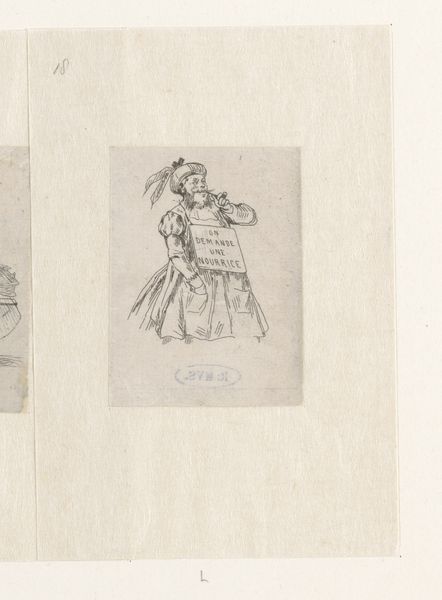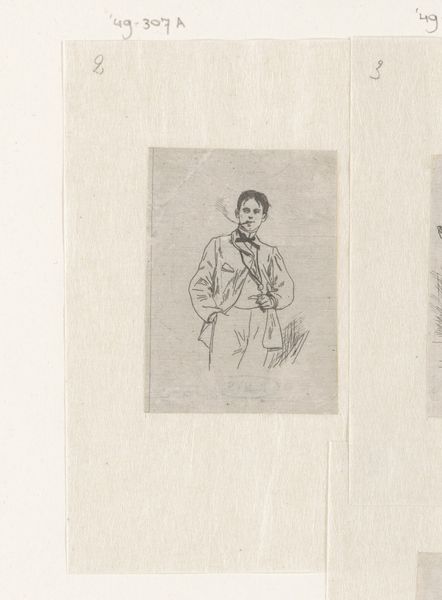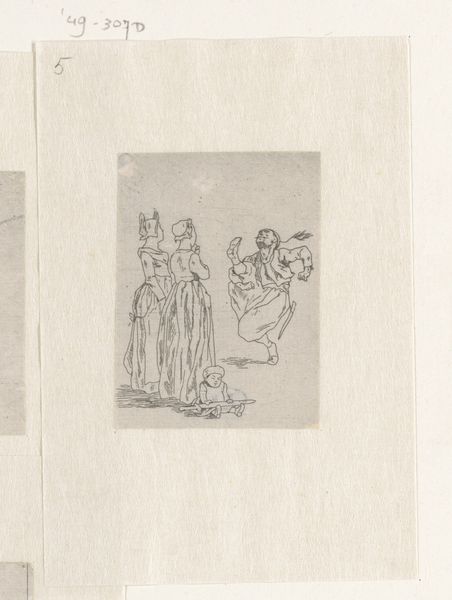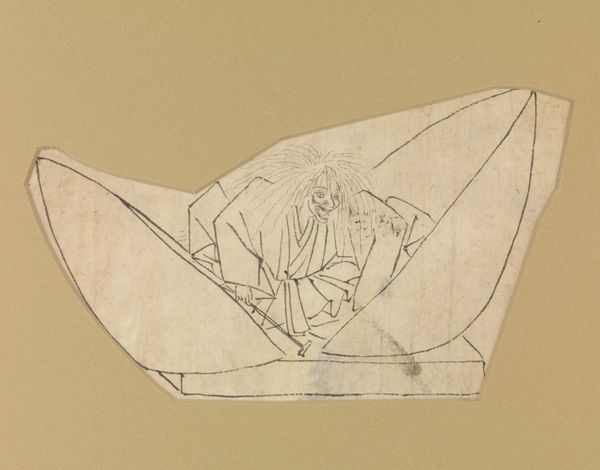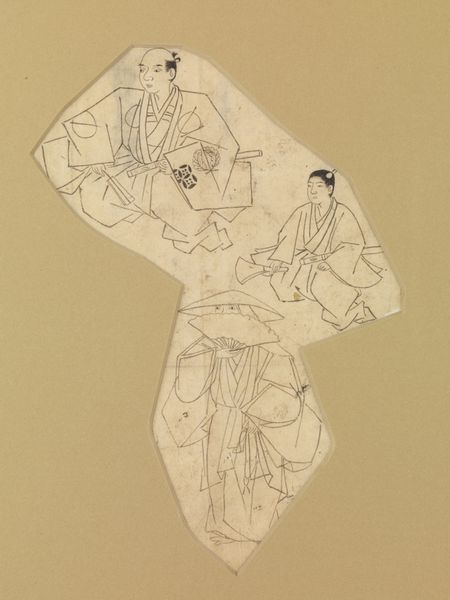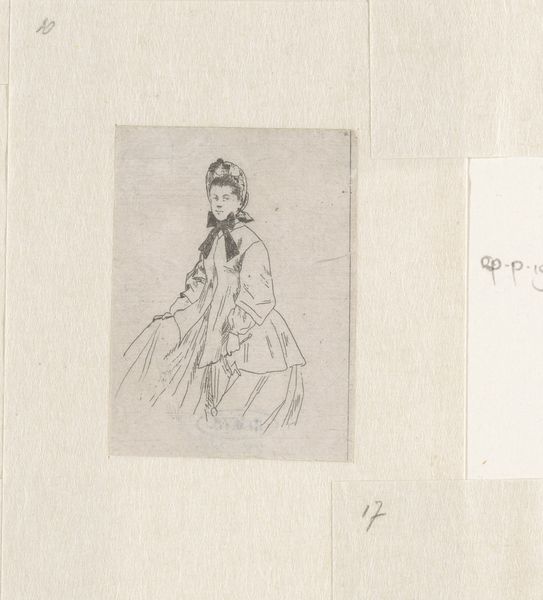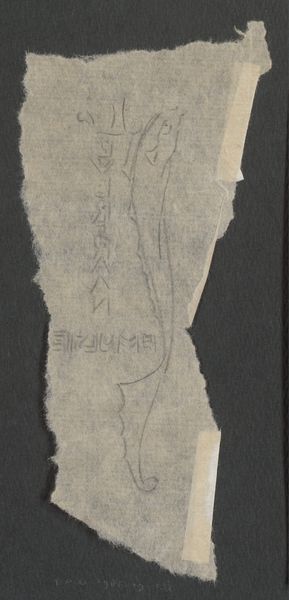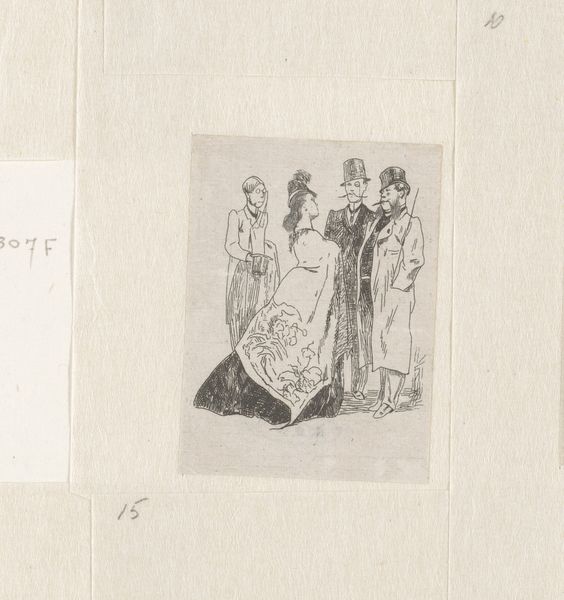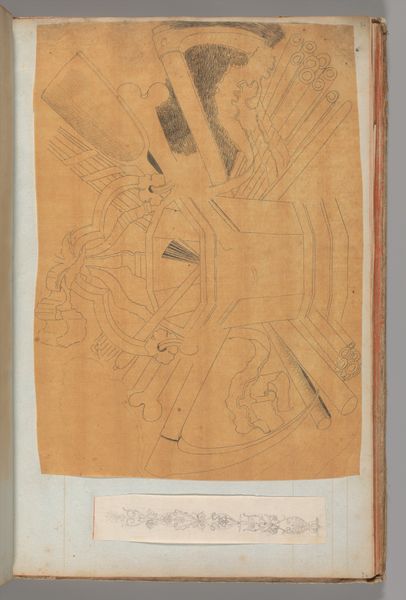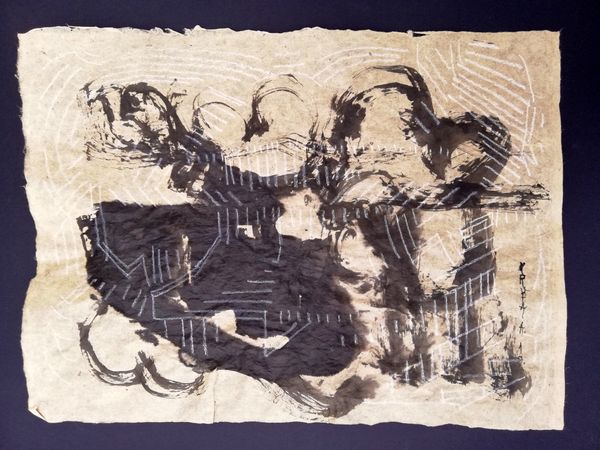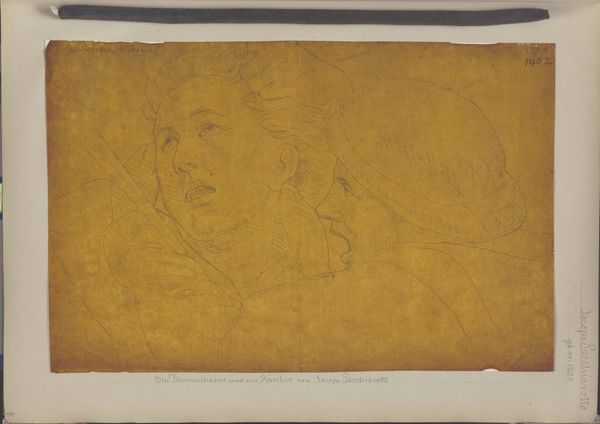
print, paper, woodcut
#
portrait
#
art-nouveau
# print
#
figuration
#
paper
#
woodcut
#
line
Dimensions: height 113 mm, width 72 mm
Copyright: Rijks Museum: Open Domain
Curator: This is the "Onderste gedeelte van de prent 'Lente gedachten'", or "Lower Part of the Print 'Spring Thoughts'," by Karel Petrus Cornelis de Bazel, created in 1895. The medium is woodcut on paper, showcasing an Art Nouveau aesthetic. Editor: My first thought is: intense! The sharp lines and contrasts feel almost unsettling for a piece supposedly about springtime. What do you make of it? Curator: I find the formal elements quite compelling. De Bazel's use of line is particularly striking—economical yet descriptive, delineating form and shadow with great precision. The stylized repetition in the upper register acts as a decorative frieze, a signature element of the Art Nouveau style, wouldn't you agree? Editor: Definitely a striking pattern. And yes, there is that obvious Art Nouveau vibe. Still, that single figure in profile – chin resting pensively in their hands, gives me pause. They seem caught in a moment of deep reflection, almost melancholy. Where is the 'spring' of it all? Curator: Consider how the composition invites our eye to travel across the picture plane. The figure's gaze leads us toward the upper part, toward those floral motifs—perhaps they symbolize growth, renewal, a certain vitalism despite the sombre affect of our figure? Editor: I see your point about the composition, but still, something about the heavy outlines feels a bit… weighty, especially for springtime. Maybe "Spring Thoughts" isn't always light and airy, but sometimes heavy with memory, the past refusing to let go? Curator: An intriguing perspective. It speaks to the power of the image to evoke a range of subjective responses. Formally, the restricted palette focuses our attention on the relationship between positive and negative space, imbuing the work with a unique visual energy. Editor: Absolutely, I love that visual tension. It leaves us suspended between this sense of melancholy reflection and that potential for renewal and spring. Thank you, I am leaving with plenty to consider.
Comments
No comments
Be the first to comment and join the conversation on the ultimate creative platform.
